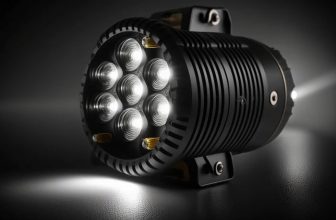
If you’re thinking of purchasing a box extender, you may be wondering how to install it. This article will provide some basic instructions to get you started, including choosing the best type for your needs. We’ll also discuss how to protect your wires from arcing. Once you’ve purchased a box extender, be sure to install it properly to prevent any unforeseen problems. After reading this article, you’ll be well on your way to completing your electrical box installation.
Installing a box extender
There are a few important steps to follow when installing an electrical box extender. First, turn off the circuit in the electrical panel. The panel could be a fuse or circuit breaker panel. Refer to a listing chart for the correct fuse or circuit breaker to use. Next, remove the cover plate of the receptacle or switch. Then, install the box extender. Then, you can reattach the cover plate.
There are many different types of box extenders on the market. Select the one that best matches the outer dimensions of your electrical box. It should also fit the gap between the front of a recessed electrical box and the wall. Then, insert the box extender, overlapping it slightly. These extenders are available in metal, plastic, and composite materials. Before you install them, you should check the electrical code.
The length of your electrical box extender is critical. If the box extender is too small, it will leave the metal surface exposed, causing loose wires to rub against it. Also, if you install a box extender on a metal surface, make sure you use screws of a long enough length to secure the box extender. The length of the screw must be at least two inches. If the screws are too short, you will need to replace them. Most electrical devices use a #6 screw, which will be sufficient.
Choosing a box extender
Choosing an electrical box extender is an easy task, provided you know what to look for. You need to find one that fits tightly in the electrical box and can slide over the switch or receptacle without disconnecting the wires. Choose an extender with mounting holes that are longer than the existing screws so you can accommodate the extra depth. Reattach the cover plate using a levelling device. After you’ve installed the extender, make sure to check the wiring for a loose connection.
Before purchasing an electrical box extender, you must first measure the space that you need to fill. Be sure that the box extender fits tightly onto the box, without leaving a gap or missing clamp wings. Purchasing an electrical box extender that is too big may leave a gap around the side of the box, leaving it open to contact loose wires. Also, make sure the box extender you are buying has a high-quality seal.
Depending on the size of the electrical box, a box extender can be made from plastic or metal. They are available in various sizes and depths. Choose one that matches the dimensions of the electrical box. The box extender should cover the entire gap around the electrical box. Some extenders may overlap the box slightly when inserted into the wall. Whether a plastic or metal extension is used, it is important to choose a box extender made from durable materials that will resist corrosion and other weather conditions.
Protecting wires from arcing
Arc faults are electrical faults that can cause fires in your home. Arc faults occur when electrical currents jump from one connection to another, creating a plasma field that can reach temperatures of more than 35,000 degrees Fahrenheit. Uncontrolled arcs can also result from faulty plugs or loose electrical connections. If you are concerned about arcing, you should protect your home’s wiring from this hazard by using an electrical box extender.
When extending wires from the electrical box, it’s important to protect them from nicks and cuts. It is important to ensure that wires are at least three inches outside of the box to avoid arcing. To add protection from nicks, consider using steel plates that are available at any building supply. For electrical junction boxes, you can consult the ELECTRICAL RECEPTACLE HEIGHT & CLEARANCES for details on height and clearance requirements.
If you are unsure of whether or not an electrical box extender is necessary, it’s important to check the dimensions of the box. A properly installed electrical box should be flush with a combustible wall surface. Recessed electrical boxes expose the wood behind the electrical box to heat and sparks, which could ignite a fire. Alternatively, you can purchase a metal box extender and install it over a plastic electrical box.




